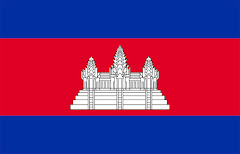Nepal | नेपाल
With its ancient culture and the Himalayas as a backdrop, landlocked
Until
A brief experiment with multi-party politics in 1959 ended with King Mahendra suspending parliament and taking sole charge in 1962.
Democratic politics was introduced in 1991 after popular protests, but was marked by frequent changes of government. The last king of
Maoist rebels waged a decade-long campaign against the monarchy, leaving more than 12,000 people dead and 100,000 people displaced according to UN figures.
When King Gyanendra's direct rule ended under public pressure in April 2006, the rebels entered talks with the parliamentary government on how to end the civil war.
A peace deal was agreed in November, although the Maoists continued to press for abolition of the monarchy.
Parliament agreed to the condition in December 2007, and the Maoists emerged as the largest parliamentary party after elections in April 2008.
The monarchy was abolished a month later, and a Maoist-dominated government took office in August.
The Maoist-led coalition government disintegrated in May 2009, and was succeeded by another coalition excluding the Maoists.
Most of the population depend on agriculture, and the UN estimates that about 40% of Nepalis live in poverty.
Foreign aid is vital to the economy, and
http://news.bbc.co.uk/2/hi/americas/country_profiles/1166502.stm
É no Nepal que se encontra o pico mais alto da terra (
o Monte Evereste,
na fronteira norte com a China.
Área Total:147,181 km2 (Portugal 92,090 km2)
Água:2,8 %
29,5 milhões de habitantes (Portugal 11 milhões)
82% da população vive com menos de 2 dólares por dia
48,6% da população é analfabeta



1 comentário:
Very nice and educational blog indeed! Loved it!
Enviar um comentário